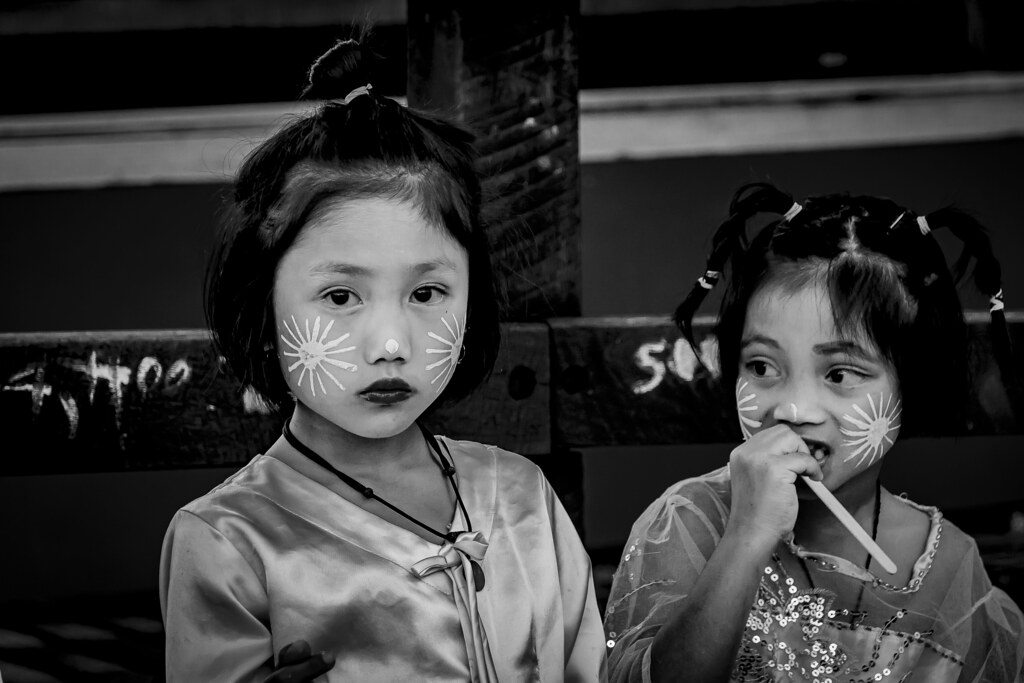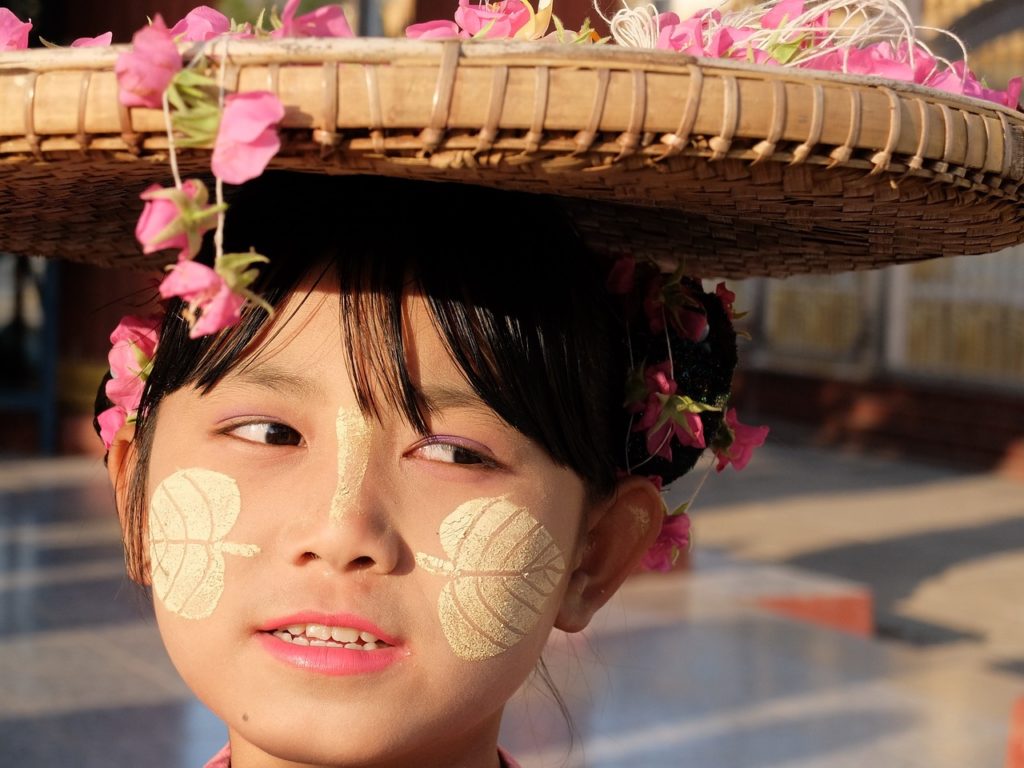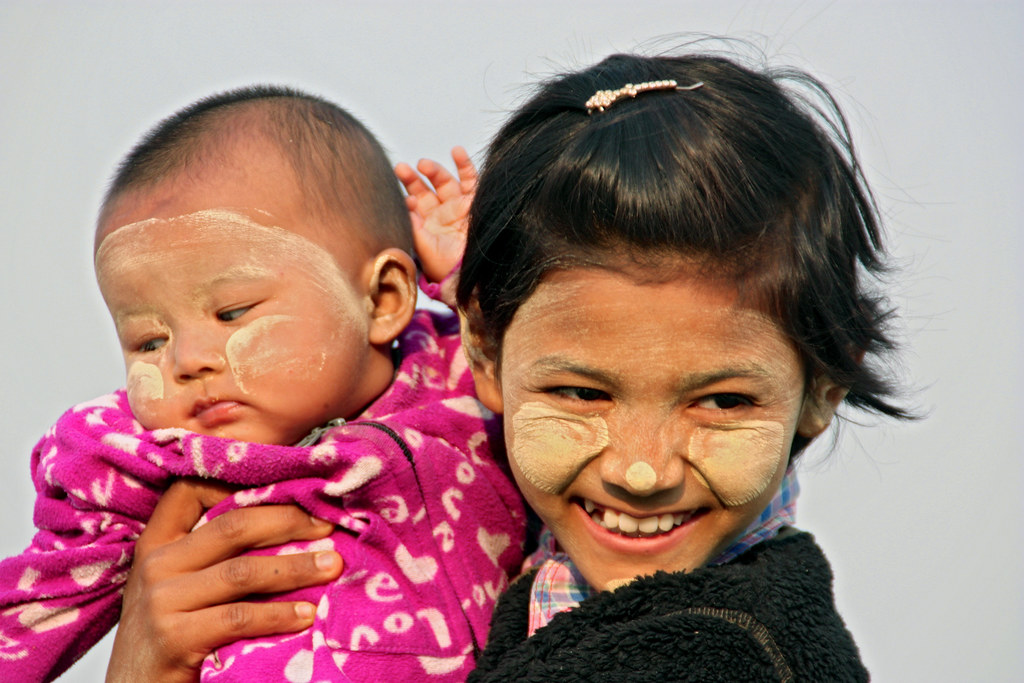
The use of Thanaka can be traced back over 2,000 years in Myanmar, where it is applied by both men and women, young and old. The application of Thanaka is not just a beauty regimen; it is a cultural practice deeply ingrained in daily life. Widely regarded as a symbol of Myanmar’s identity, the unique patterns created by the application of Thanaka on the face represent a sense of belonging and pride in one’s heritage.

Preparation and Application: The process of making Thanaka paste is a meticulous one. The bark of the Thanaka tree is ground into a fine powder, mixed with water, and then applied to the face in various decorative patterns. The circular patterns on the cheeks and nose are common, though the designs can vary based on personal preference and regional traditions. The paste not only acts as a cosmetic but also serves practical purposes, offering protection against the harsh sun, acting as a natural sunscreen.

Beyond its cultural significance, Thanaka is renowned for its skincare properties. Packed with antioxidants, the paste is believed to have anti-inflammatory and cooling effects, making it a popular choice for soothing the skin in Myanmar’s tropical climate. It is often applied to treat sunburn, acne, and other skin irritations.
In recent years, Thanaka has found its way beyond Myanmar’s borders, captivating the interest of beauty enthusiasts worldwide. With the rise of natural skincare trends, Thanaka has been embraced as a unique and exotic ingredient in various cosmetic products. From creams to lotions, the cosmetic industry has recognized the potential benefits of this ancient Burmese beauty secret.

Beyond its aesthetic appeal, the use of Thanaka reflects a deep connection to tradition, identity, and the natural beauty found in the heart of this Southeast Asian nation. As Myanmar navigates the challenges of modernization, Thanaka continues to symbolize the enduring beauty and resilience of its people.





![[HONORARY DOCTORATE OF RECORD FOR PRACTICE AND EMPIRICAL RESULTS – 2017] LY THI MAI (HO CHI MINH CITY, VIETNAM)](https://aseanrecords.world/wp-content/uploads/2024/04/0_16-27_jpg_751-218x150.jpg)








